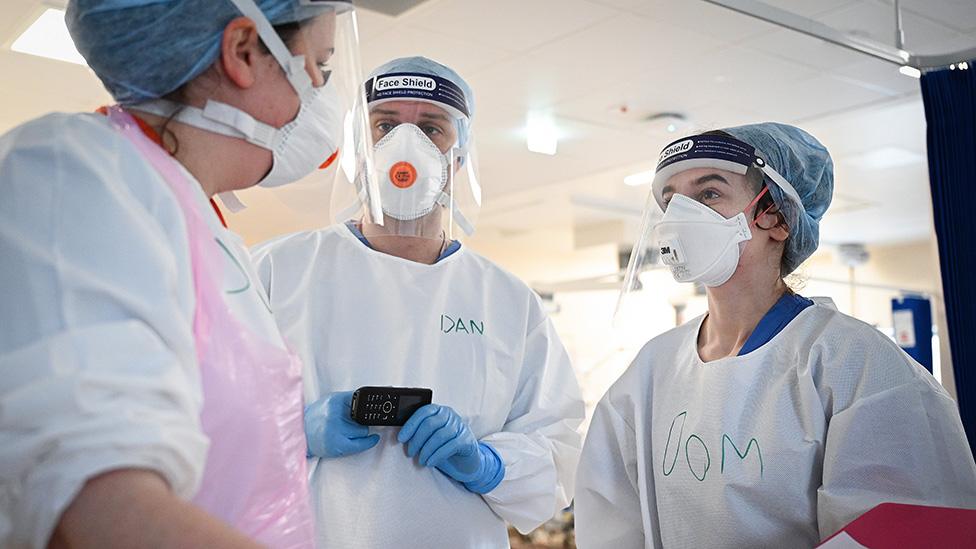Covid: How ready is Scotland to unlock?
- Published
- comments

Garden centres have already been allowed to open as part of the easing of restrictions
Covid travel restrictions around Scotland are due to be eased on Friday, earlier than expected, but there will be a much more significant relaxation in the rules from 26 April. As Scotland prepares to unlock, here are five things about the state of the epidemic.

1. Infection rates reach 'moderate' level
The emergence of the Kent Covid variant in the weeks before Christmas drove a massive spike in cases in Scotland.
At the beginning of the year, the number of weekly cases per 100,000 people in Scotland almost reached 300, triggering a full lockdown which has now lasted almost four months.
But there has been a sustained decline in weekly cases since January, with the rate falling to below 35 on 13 April.
Using a World Health Organization (WHO) system for measuring infection levels, external, this indicates Scotland has a "moderate" level of community transmission of the virus.
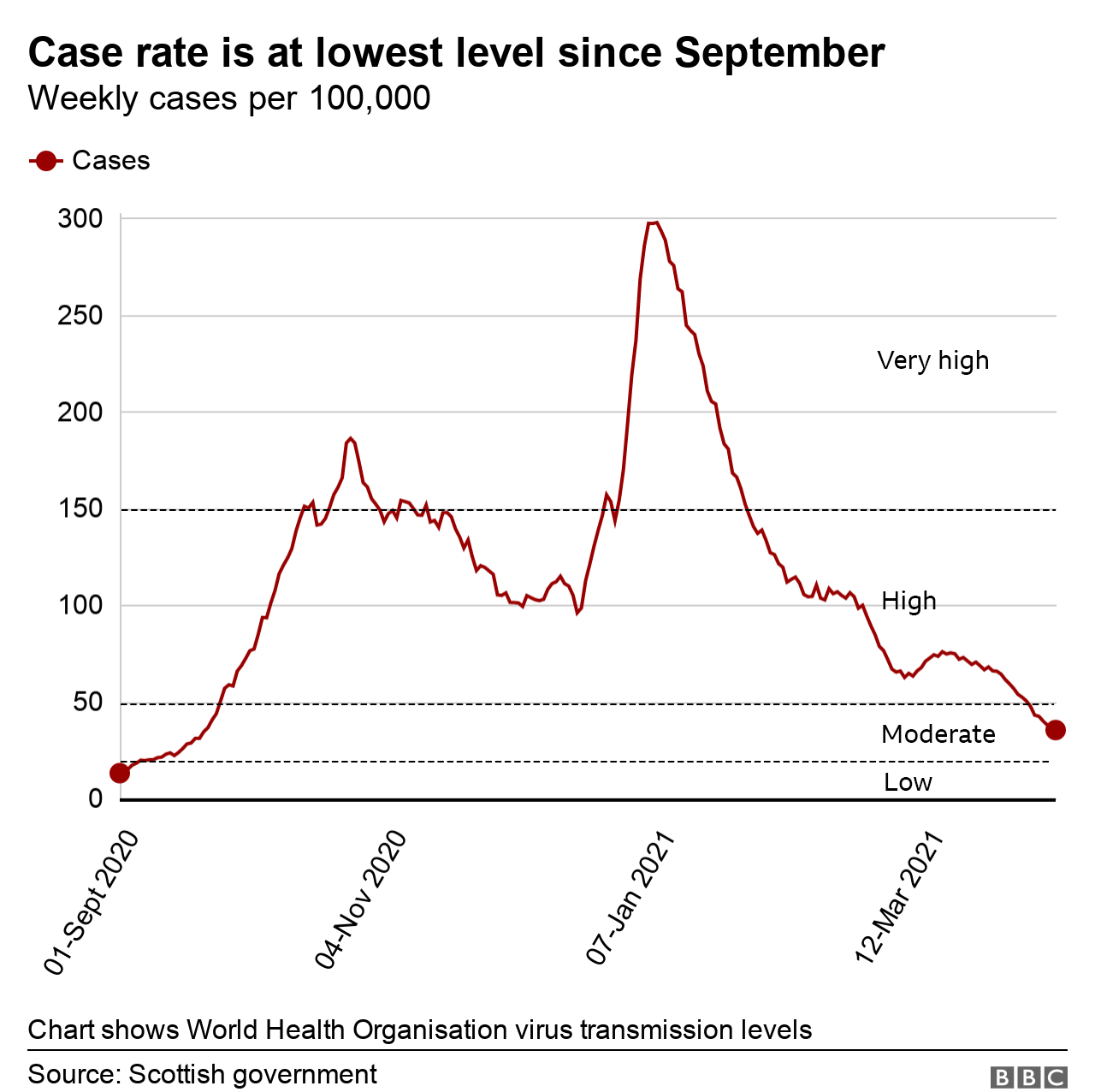
The rate is now the lowest it has been since September and still appears to be falling.
2. The death rate per 100,000 has been below 1.0 for a month
Scotland's death rate also spiked in January after the Kent variant spread rapidly among the population.
It is believed that the variant can lead to a higher chance of hospitalisation and death, as well as being much more infectious.
Towards the end of January the number of weekly Covid deaths per 100,000 people within 28 days of a positive test went higher than eight.
This figure went below 1.0 on 14 March and by 12 April it had fallen to 0.1.
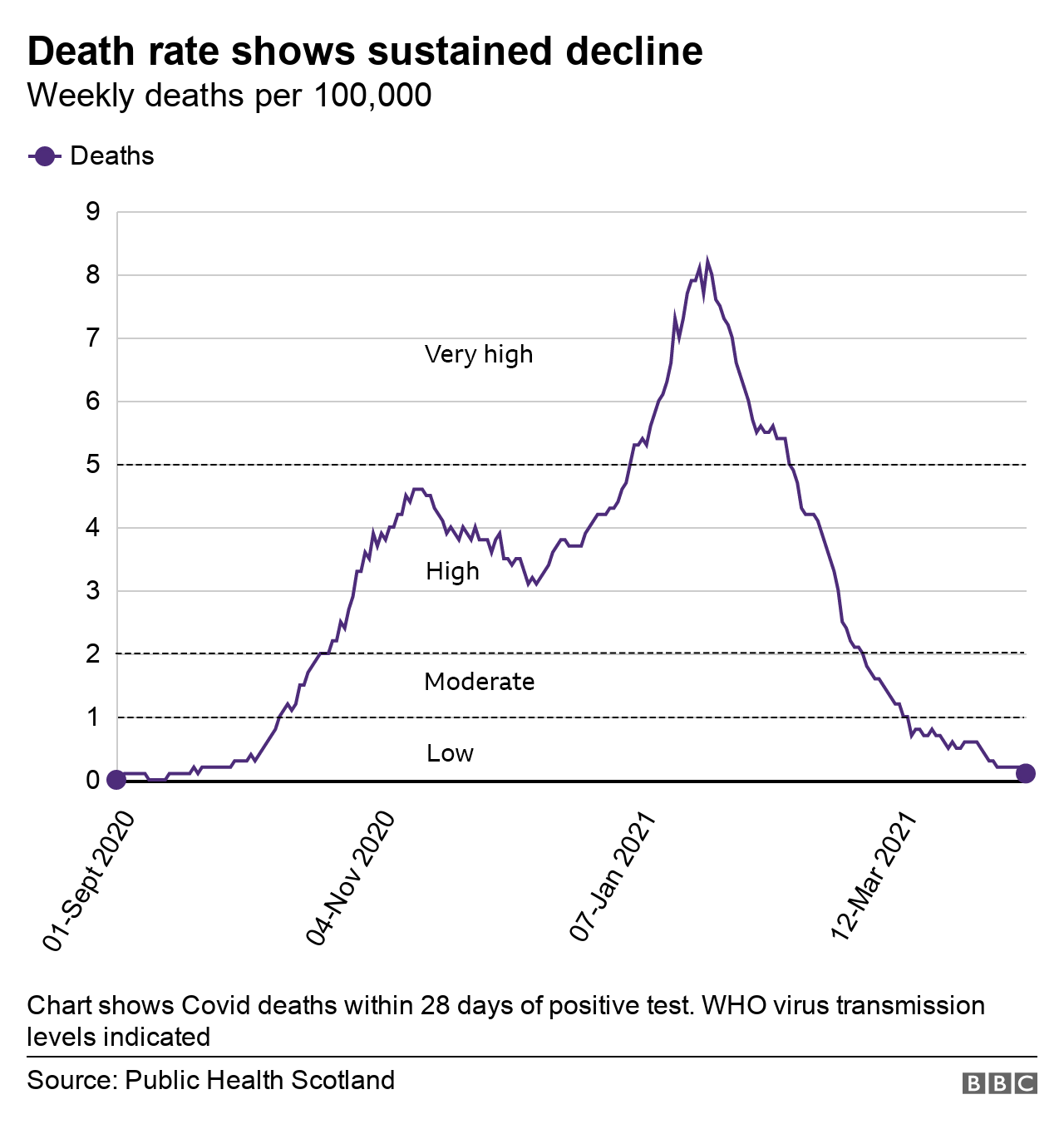
The Scottish government says this sustained decline in the death rate has been achieved through a combination of people sticking to lockdown rules, and the vaccination of those most vulnerable to becoming severely ill or dying from Covid-19.
According to the WHO's thresholds, the death rate in Scotland indicates "low" levels of community transmission.
3. The percentage of positive cases is also falling steadily
The Scottish government measures the positivity rate by dividing the number of positive tests per day by the total number of tests carried out.
By this measure the 14-day average on 12 April was 1.9% - just below the WHO's 2% threshold indicating a "low" level of community transmission.

It's worth pointing out that the WHO's preferred way of measuring the positivity rate is through "sentinel surveillance", or random community testing, which is not how the Scottish government reports it in its daily figures.
However, the organisation lists "overall test positivity" as an additional measure if a comprehensive testing system is in place.
4. There are still local differences across Scotland
It's expected that all of Scotland will harmonise at level three from 26 April.
Rates in all local authorities have fallen in the last couple of months, but there are still significant differences between areas.
There have been very few cases recently in Shetland, Orkney, the Western Isles or in Dumfries and Galloway, contrasting with much higher rates in Clackmannanshire, North Lanarkshire and West Lothian.

This variation in rates is one the Scottish government will continue to watch carefully, as public health officials try to avoid importing cases from areas of high levels of the virus to communities with low levels.
First Minister Nicola Sturgeon said on Tuesday that there may still be a need in future for some "limited travel restrictions" within Scotland to prevent this happening.
On 9 April, there were 10 local authorities with a higher level of cases than the Scotland-wide rate - and six are still categorised as having "high" levels of community transmission according to the WHO.
What does the WHO system mean?
The WHO outlines five "situational levels" ranging from level zero, when there should be "no restrictions" on daily activities, up to level four which requires a full lockdown to tackle an "uncontrolled epidemic".
Using measures like the death rate and the percentage of positive cases, the WHO system indicates that Scotland is currently sitting in level one or two, which is when more stringent rules like travel restrictions can be lifted.
In other words, Scotland does appear ready to come out of a full lockdown.
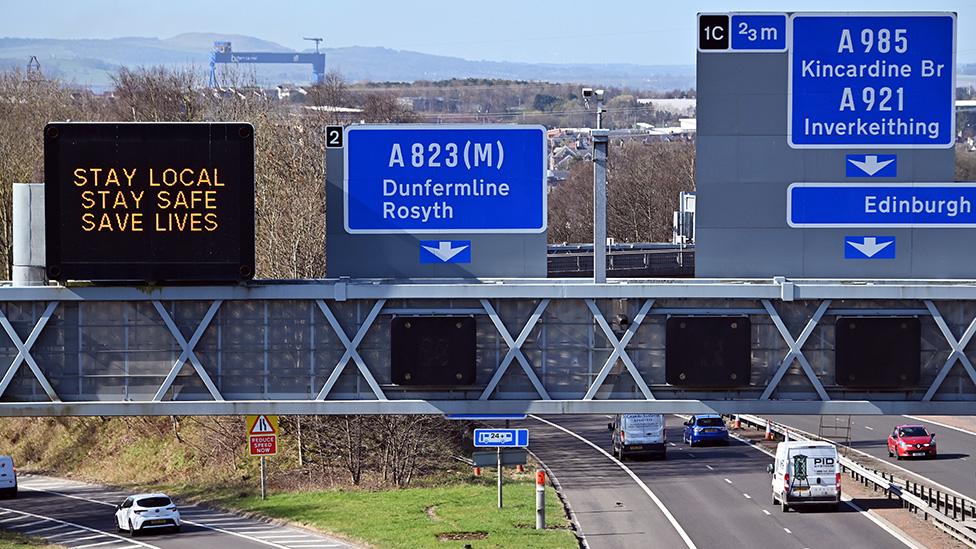
Travel restrictions across Scotland will be lifted on Friday
The WHO says that in level two some additional measures may be required to control transmission, however, "disruptions to social and economic activities can still be limited".
In level one, "basic measures" should remain in place to prevent Covid infections spreading, but any disruptions to social and economic life should be "limited and transient".
But there is an important caveat to the WHO document, which possibly casts an even more optimistic light on Scotland's situation - it was written in November and so does not take into account a country's vaccination programme.
5. How is the vaccination programme going?
About 60% of people aged 16 or over in Scotland have now received at least a first dose of a Covid vaccine, with hopes that the programme will be complete by the end of July.
In recent weeks there has been a focus on administering second doses of the vaccine, with more than 600,000 people in Scotland now fully vaccinated.
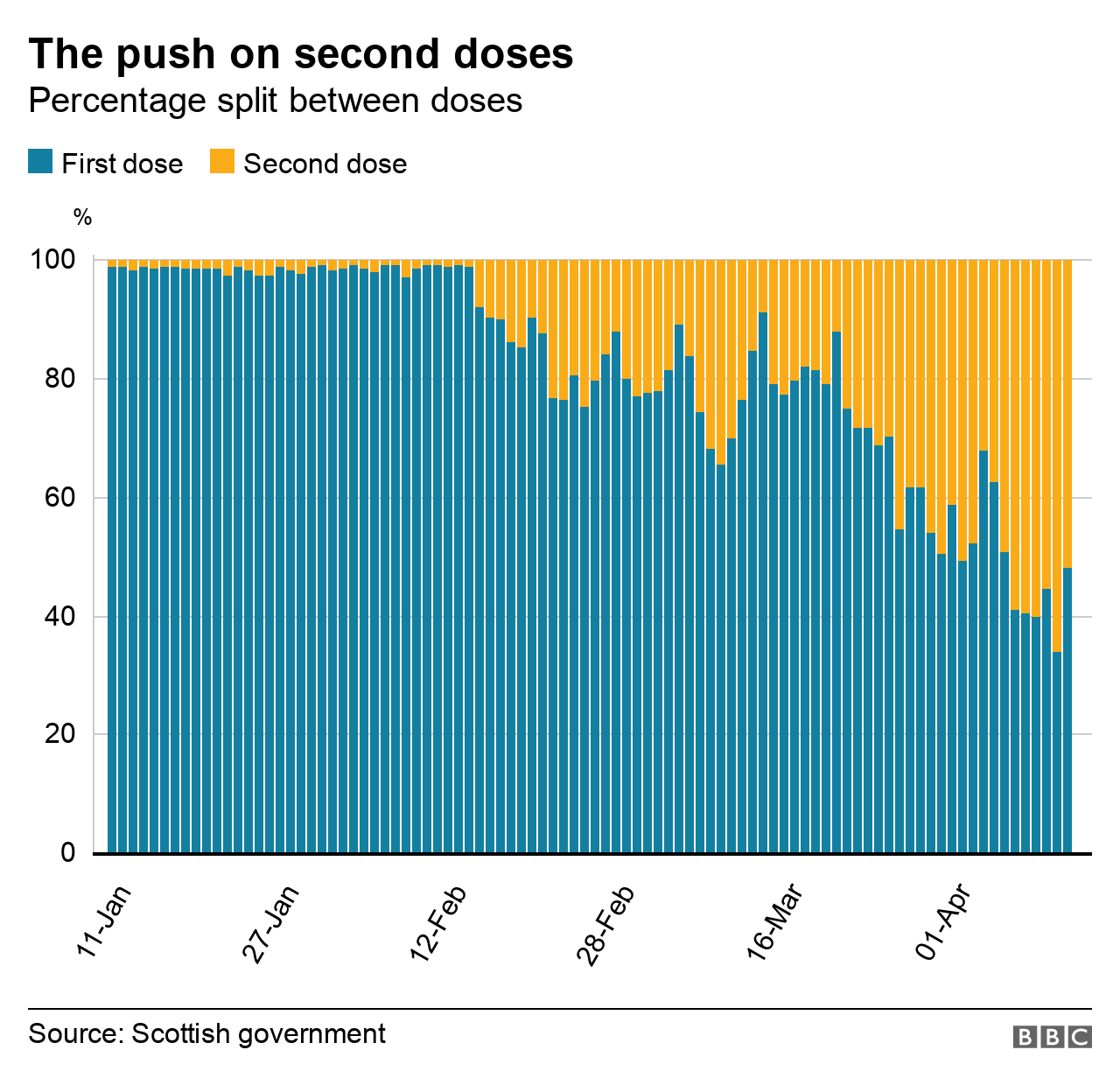
The Scottish government also says that everyone in the nine priority groups, as set out by the Joint Committee on Vaccination and Immunisation, external, has now been offered a vaccine, with almost all the over-50s having received a first dose.
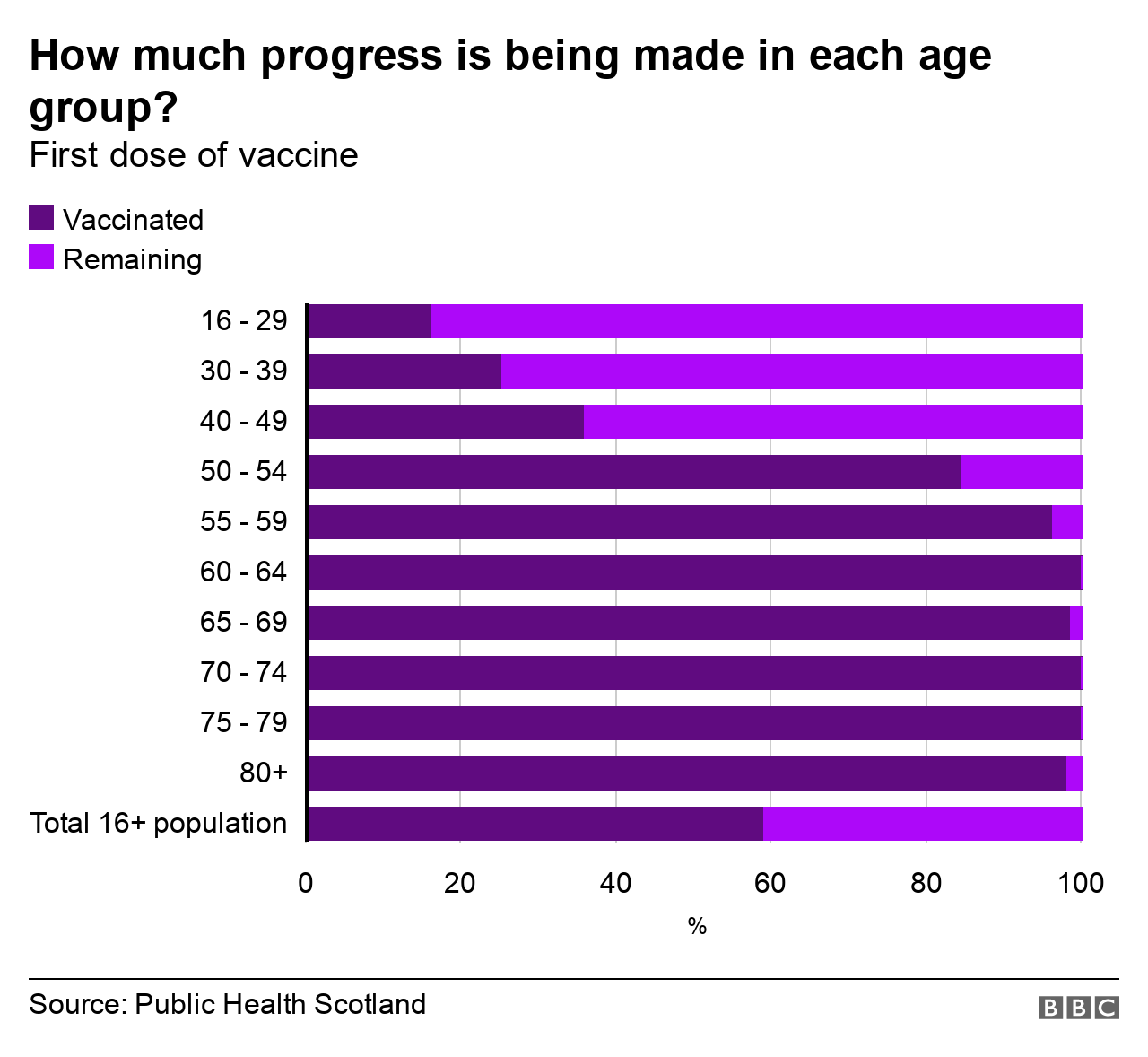


- Published13 April 2021
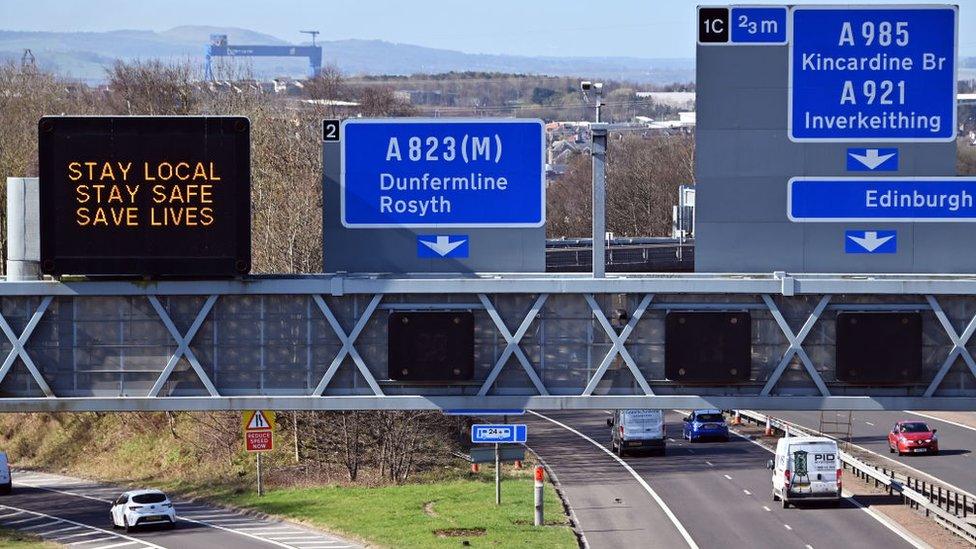
- Published23 March 2021
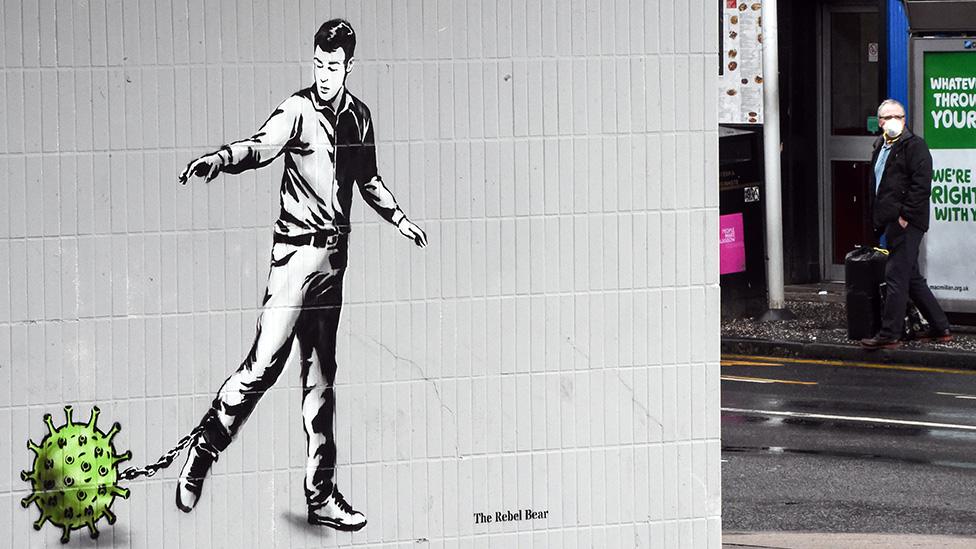
- Published25 February 2021
